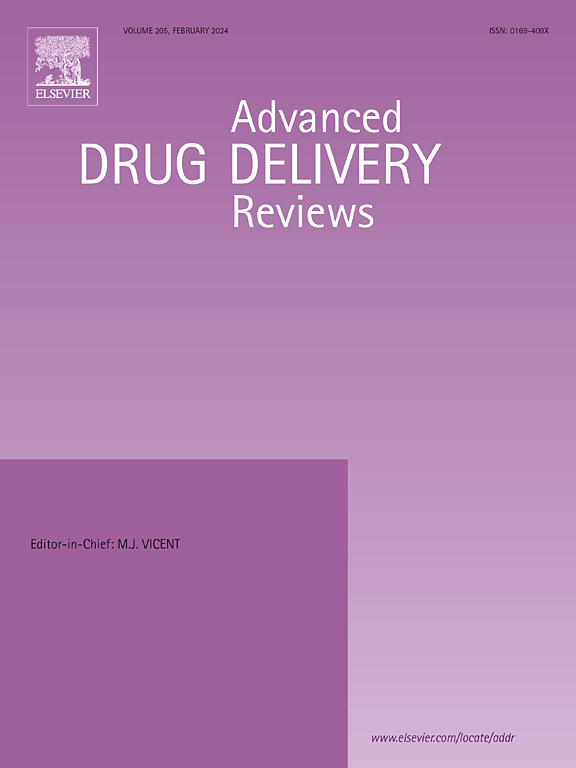Paving the way for bacteria-based drug delivery: biohybrid microrobots emerging from microrobotics and synthetic biology
IF 17.6
1区 医学
Q1 PHARMACOLOGY & PHARMACY
引用次数: 0
Abstract
Advances in microrobotics and synthetic biology are paving the way for innovative solutions to long-standing challenges in drug delivery. Both fields have independently worked on engineering bacteria as a therapeutic system, focusing on enhancing propulsion, cargo delivery, detection, and biocompatibility. Bacteria, with their inherent adaptability and functional versatility, serve as an ideal foundation for these efforts, enabling them to navigate complex biological environments such as the human body.
This review explores the convergence of microrobotics and synthetic biology, which has catalysed the development of biohybrid bacterial microrobots that integrate the strengths of both disciplines. By incorporating external control modalities – such as light, ultrasound, and magnetic fields – these hybrid systems address the limitations of purely microrobotic or biological approaches, offering new opportunities to enhance precision and efficacy in targeted therapies.
However, realising the full potential of biohybrid bacterial microrobots requires overcoming critical challenges, such as ensuring compatibility between biological and synthetic components, scaling manufacturing processes, and defining regulatory pathways tailored to living therapeutics. Addressing these hurdles through joint, interdisciplinary research efforts, can unlock the transformative possibilities of these systems in modern medicine.


为以细菌为基础的药物输送铺平道路:微机器人和合成生物学中出现的生物混合微型机器人
微型机器人和合成生物学的进步为解决药物输送方面长期存在的挑战铺平了道路。这两个领域都在独立地研究工程细菌作为治疗系统,重点是增强推进力、货物输送、检测和生物相容性。细菌具有固有的适应性和功能的多功能性,为这些努力提供了理想的基础,使它们能够驾驭复杂的生物环境,如人体。这篇综述探讨了微型机器人和合成生物学的融合,这促进了融合这两个学科优势的生物混合细菌微型机器人的发展。通过结合外部控制模式,如光、超声和磁场,这些混合系统解决了纯微型机器人或生物方法的局限性,为提高靶向治疗的精确度和有效性提供了新的机会。然而,实现生物混合细菌微型机器人的全部潜力需要克服关键挑战,例如确保生物和合成成分之间的兼容性,缩放制造工艺,以及定义适合活体治疗的调节途径。通过跨学科的联合研究努力解决这些障碍,可以释放这些系统在现代医学中的变革性可能性。
本文章由计算机程序翻译,如有差异,请以英文原文为准。
求助全文
约1分钟内获得全文
求助全文
来源期刊
CiteScore
28.10
自引率
5.00%
发文量
294
审稿时长
15.1 weeks
期刊介绍:
The aim of the Journal is to provide a forum for the critical analysis of advanced drug and gene delivery systems and their applications in human and veterinary medicine. The Journal has a broad scope, covering the key issues for effective drug and gene delivery, from administration to site-specific delivery.
In general, the Journal publishes review articles in a Theme Issue format. Each Theme Issue provides a comprehensive and critical examination of current and emerging research on the design and development of advanced drug and gene delivery systems and their application to experimental and clinical therapeutics. The goal is to illustrate the pivotal role of a multidisciplinary approach to modern drug delivery, encompassing the application of sound biological and physicochemical principles to the engineering of drug delivery systems to meet the therapeutic need at hand. Importantly the Editorial Team of ADDR asks that the authors effectively window the extensive volume of literature, pick the important contributions and explain their importance, produce a forward looking identification of the challenges facing the field and produce a Conclusions section with expert recommendations to address the issues.

 求助内容:
求助内容: 应助结果提醒方式:
应助结果提醒方式:


